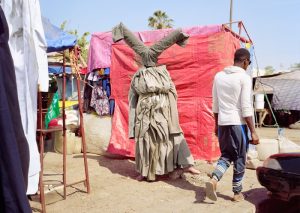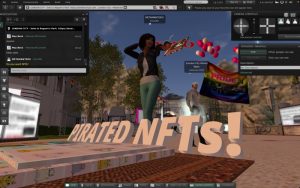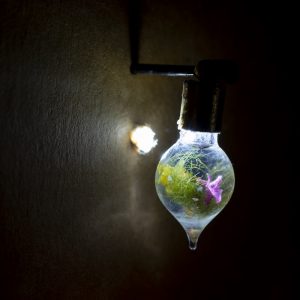 A few weeks ago, i met Myriel Milicevic in London, she was all stressed about a worshop she was going to head in Antwerp (Belgium). Well… she shouldn’t have worried: the outcome of the Human Powered workshop is great. The workshop was exploring the potential of using the human body itself as a renewable power source. The workshop participants came up with prototypes of a bike that heats a cup of tea while you cycle through the countryside, a power generating shopping cart for the homeless, a fun vehicle to clean the streets, a system that powers the mouse by the movements you make with it anyway, etc.
A few weeks ago, i met Myriel Milicevic in London, she was all stressed about a worshop she was going to head in Antwerp (Belgium). Well… she shouldn’t have worried: the outcome of the Human Powered workshop is great. The workshop was exploring the potential of using the human body itself as a renewable power source. The workshop participants came up with prototypes of a bike that heats a cup of tea while you cycle through the countryside, a power generating shopping cart for the homeless, a fun vehicle to clean the streets, a system that powers the mouse by the movements you make with it anyway, etc.
I decided to ask Myriel just a couple of questions about the workshop, got carried away and the result of our email exchange is a bit long (my fault) but really fascinating (hers):
I’ve been very surprised by the fantastic and humorous projects that the Human Powered workshop managed to generate. You wrote in the introduction of the online report that “While technology so far has been developed towards a state of minimum human effort, this workshop now explores the potential of using the human body itself as a renewable power source.” Do you see signs around you that we, lazy and spoilt human beings, might want to really make some physical effort to generate energy?
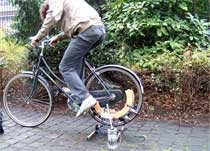
 Bike 4 Tea and MilkAway
Bike 4 Tea and MilkAway
First it might seem like a step back to the old days, where physical labour was the common way to make something work. But really, once devices require less power, it could become an interesting option for the future: then you might not even have to make the extra effort, remain reasonably lazy and you could power your mp3 player just as you walk.
In a way, this is already possible and a lot of research is being done in this field. So what is even more interesting is thinking about where human powers are currently lying dormant and how their use would change our interaction with products and other people: would I join strangers in an energy cooperation when one human power is not enough? Would I give mine for free or trade it? Would I actually start running, make detours, take the stairs?
We think it’s funny because it’s not part of our logic anymore to power our own stuff and sweating for making things work always had a rather undistinguished connotation.
At the same time, there are those comforting imaginations about being completely self-sustaining, such as in case of disasters.
Human powered objects themselves have a fascinating simplicity, it is easy to understand how to use them, which is a quality that often is lost in contemporary high-tech devices.
The signs of course are that we have an increasing amount of battery powered products, and batteries are a major environmental burden. On the other hand, many people live without access to a power grid and need to generate their own electricity. There have been some interesting projects in this area for example by MIT D-Lab or Design that Matters – Kinkajou Power Challenge.
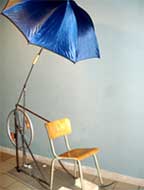
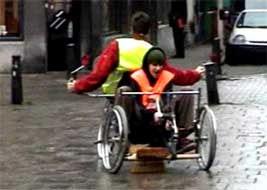 Rocking Chair and Dirt Anihilator 1
Rocking Chair and Dirt Anihilator 1
How does a workshop function? How do you get participants so engaged in its process? Do you start with theory? Or give them a tour of what has already been done in the field? What are the secrets to make them unleash their creativity?
I was talking with Amy Franceschini about her experiments with people-powered objects, and we thought it would be a great excercise for a workshop. She’s quite involved in this area, and contributed a lot to the dialogue. In those early stages, it was really good to see that different aspects of the idea were attractive to different people.
Richard Shed and I even prototyped a blow-powered pig lift! So the whole preparation part was already fun for me, and that really carried over into the workshop itself.
For this workshop I first asked everyone bring as much scrap and stuff they could find to build things from. In this case, having materials and mechanical parts around is already very inspiring and it’s good to start making things very soon.
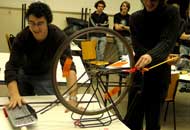 Then, plot the field as wide as possible: in a warm-up fiction exercise we fantasised what a human powered city might look like on the moon, where no other common energy sources can be found. City planning teams were working on areas such as “health care”, “entertainment”, “trade”, “food production”, “the home”, etc. Some very far-reaching concepts evolved here, such as using even the gases from decaying bodies, or the energies set free when dancing in clubs or when rolling in bed.
Then, plot the field as wide as possible: in a warm-up fiction exercise we fantasised what a human powered city might look like on the moon, where no other common energy sources can be found. City planning teams were working on areas such as “health care”, “entertainment”, “trade”, “food production”, “the home”, etc. Some very far-reaching concepts evolved here, such as using even the gases from decaying bodies, or the energies set free when dancing in clubs or when rolling in bed.
Having an extensive reader along with many diverse examples helps students to be informed, find their own focus and other team members with shared interests.
However, in the end, it was really the students who unleashed themselves, they were extremely motivated about the topic. There were only a few days to actually make the prototypes, reflect on the ideas and present them – such dense timing can be a good thing for keeping a workshop dynamic.
In the beginning I wasn’t really sure myself what to expect as outcomes and got happily surprised by this range of the projects – from very practical solutions like heating baby milk on your body, to complete imaginations of the integrated use of body heat. From hard core bike powered machines to ambient, even relaxing forms of energy generation.
In the References section of the report there is a long list of inspiring projects and people. Can you select just two of them and explain us why they so brilliantly embody the concept of people becoming their own renewable source of energy?
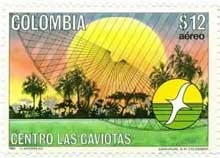 In eastern Colombia there is an eco-village called Gaviotas. Engineers, scientists, agronomists and artists have settled there in the 1960ies and built an environmental research centre. All their infrastructure is based on sustainable living and many innovative designs have been developed there, such as the Gaviotas see-saw, where children pump water out of the ground as they bounce up and down. I think it’s brilliant because it turns a cumbersome work into a positive and fun activity.
In eastern Colombia there is an eco-village called Gaviotas. Engineers, scientists, agronomists and artists have settled there in the 1960ies and built an environmental research centre. All their infrastructure is based on sustainable living and many innovative designs have been developed there, such as the Gaviotas see-saw, where children pump water out of the ground as they bounce up and down. I think it’s brilliant because it turns a cumbersome work into a positive and fun activity.
A completely different setting but just as intriguing is a test conducted by Japanese Railroad at Tokyo’s Shibuya station, where masses of people walk through the ticket gates, each of them generating electricity by stepping on special pressure pads. Unfortunately they are not using this power for any purpose yet.
(via Popgadget.)
I remember seeing you fully engaged in another very playful workshop in Paris last year, during the Mal Au Pixel festival. Can you tell me two words about its outcome?
This was a funny and very fast-paced experiment that Amy Franceschini and I were running together, investigating how interchangeable concepts of politics and play are, identifying these concepts in city neighbourhoods and creating street games from the findings.
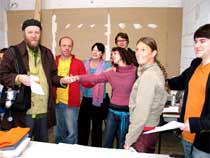
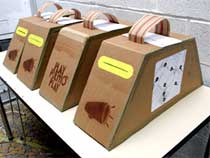
Participants would venture out in teams to observe a confined area in respect to social/ economic/ natural and cultural conditions, collecting votes and opinions from local people. Then neighbourhood data was mapped to games that we would play out on the streets again.
The most obvious, yet interesting outcome was the discovery that there is not much difference between politics and play. When discussing ideas around politics and play, they quickly looped back upon each other in terms of strategy, competition, teams, cheating, etc. It would be interesting to repeat this exercise in different cities and areas, and see what similarities there are and where the outcomes would be different. If anyone would like to host a Politics of Play workshop, contact us!
Many of your projects deal with sustainability. Most of them have a very playful take on it. How much is playfulness important to your approach? Isn’t there a risk that the message might be lost in too much playfulness? How do you keep the balance between the game element and the fact that the message behind it is very serious?
Employing playfulness, humour, even fiction is for me a much more inspiring way to think about reality: they offer another look on ourselves and our behaviours. I love stories where such reflections on society are put into fantastic settings, as for example in Flatland or Gulliver’s Travels.
With Neighbourhood Satellites, I mapped air pollution levels to parameters of a mobile video game, translating the dull numbers into a more intuitive visual language. Far from making light of a serious problem, it made some people talk about air pollution for the first time in their lives. I think this is the power of playfulness, that it allows people to lower their guard and approach issues that they would normally find too taxing to deal with.
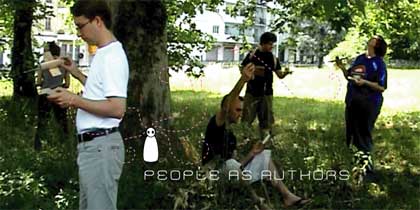 Neighbourhood Satellites
Neighbourhood Satellites
There’s a real divide between our day to day experiences and the mediated information which we are given. I like to remind people that they can make their own observations, share them, get feedback on their actions and see grass-roots movements evolve. People can come up with very powerful and creative solutions even with very limited resources.
Thanks Myriel!

